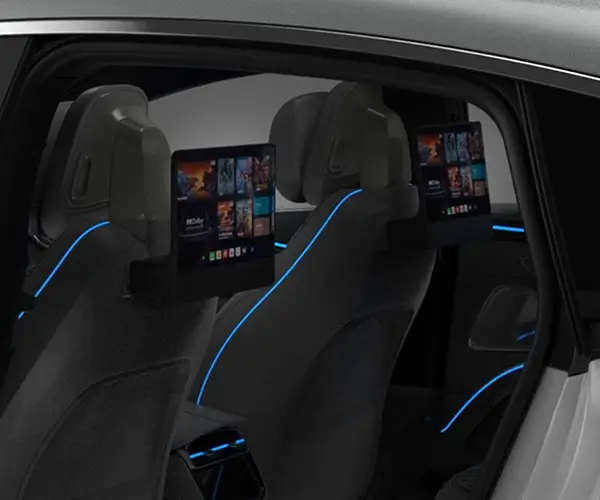Certainly! Here is the first part of a detailed and engaging soft article on "Circuit Diagram for Servo Motor with RPi," designed to attract and inform readers interested in robotics, electronics, and DIY projects.

Unlocking the Basics—Understanding the Core Components and Setting the Stage
In the rapidly evolving landscape of DIY electronics and robotics, few projects are as accessible yet fulfilling as integrating a servo motor with a Raspberry Pi. Whether you're building a robotic arm, an automated camera slider, or a small-scale automation system, understanding the fundamental circuitry and control mechanisms is the first step toward success.
Why Use a Servo Motor with Raspberry Pi? Servo motors are compact, highly precise, and versatile actuators capable of rotating to designated angles, making them invaluable in robotics, instrumentation, and automation projects. When paired with the Raspberry Pi—a powerful, affordable, and flexible single-board computer—they unlock countless possibilities for intelligent, interconnected systems.
But to harness their potential, you need to understand how to wire them correctly and control their motion via programming. The circuit diagram is the blueprint that shows you how each component fits into your project, ensuring safety, efficiency, and functionality.
Key Components of the Circuit
Raspberry Pi The brain of your project, commonly an RPi 3 or RPi 4, provides the processing power to send control signals. Its GPIO pins are the gateways to controlling external devices like servo motors.
Servo Motor Typically, these are standard hobby servo motors, such as the SG90 or MG90S, which operate on a 5V power supply and accept pulse-width modulation (PWM) signals for precise positioning.
Power Supply While the Raspberry Pi is powered via its standard power adapter, servo motors often require a separate power source to ensure stable operation, especially when controlling multiple servos or larger models.
Connecting Wires and Breadboard Flexible jumper wires and a breadboard facilitate easy prototyping, allowing you to connect components without soldering.
Optional Components Depending on your project, you might include a resistor (for signal conditioning), capacitor (to smooth the power supply), or a transistor (for controlling higher currents).
The Basic Circuit Diagram: A Visual Approach
At its core, the basic circuit for controlling a single servo motor with a Raspberry Pi involves three essential connections:
Power (VCC): Connect the servo's power pin to a 5V power source (preferably from a separate, regulated power supply). Ground (GND): Connect the servo's ground pin to both the Raspberry Pi's GND and the power supply's ground to establish a common reference point. Control Signal (PWM Signal): Connect the control pin of the servo to one of the Raspberry Pi's GPIO pins configured for PWM output.
An example of a simple wiring configuration:
Servo VCC → 5V Power Supply (not directly from Pi's 5V pin if high power draw is expected) Servo GND → Raspberry Pi GND and Power Supply GND Servo Signal → GPIO Pin 18 (physical pin 12) on Raspberry Pi
Handling Power Needs—Safety and Stability
One critical aspect in designing your circuit is ensuring the servo motor receives a reliable power supply. The Raspberry Pi's 5V pin may not suffice when controlling high-torque or multiple servos, as it’s mainly designed to power the Pi itself. An external regulated power supply capable of delivering sufficient current (sometimes up to a few hundred milliamps or more for larger servos) is recommended.
Using a common ground between the Pi and the servo's power source is essential to ensure the control signals are correctly interpreted.
Tip: Do NOT power the servo directly from the Pi's 5V pin if your servo or setup demands higher current. This can cause voltage drops, system instability, or damage to your Pi.
Wiring Best Practices and Precautions
Use a separate power source for the servo when possible. Add a capacitor (around 100uF) across the power supply terminals of the servo to dampen voltage spikes. Confirm the polarity before connecting, avoiding reverse wiring that could damage components. Scenario Suitability: For small projects or testing, powering both from the Pi may be sufficient, but for more robust or multiple servos, always go for an external power source.
Programming Your Circuit—Getting Ready to Control
Once your physical connections are in place, you're set to write code to command your servo motor. The Raspberry Pi's GPIO pins can generate PWM signals, which are vital for controlling servo position.
This brings us to the fascinating part: translating electrical signals into physical movement. With Python, leveraging libraries like RPi.GPIO or pigpio, you can craft scripts that precisely control servo angles, enabling smooth, accurate motion.
In the next section, we will explore the programming aspect—turning your circuitry into an animated robotic limb or a smart mechanism. We’ll cover wiring diagrams in detail, practical tips to ensure reliability, and sample codes to help you get started confidently.
Stay tuned for Part 2, where we go deep into the programming side, troubleshoot common issues, and explore advanced configurations that enhance your robotics projects.
Established in 2005, Kpower has been dedicated to a professional compact motion unit manufacturer, headquartered in Dongguan, Guangdong Province, China.




































